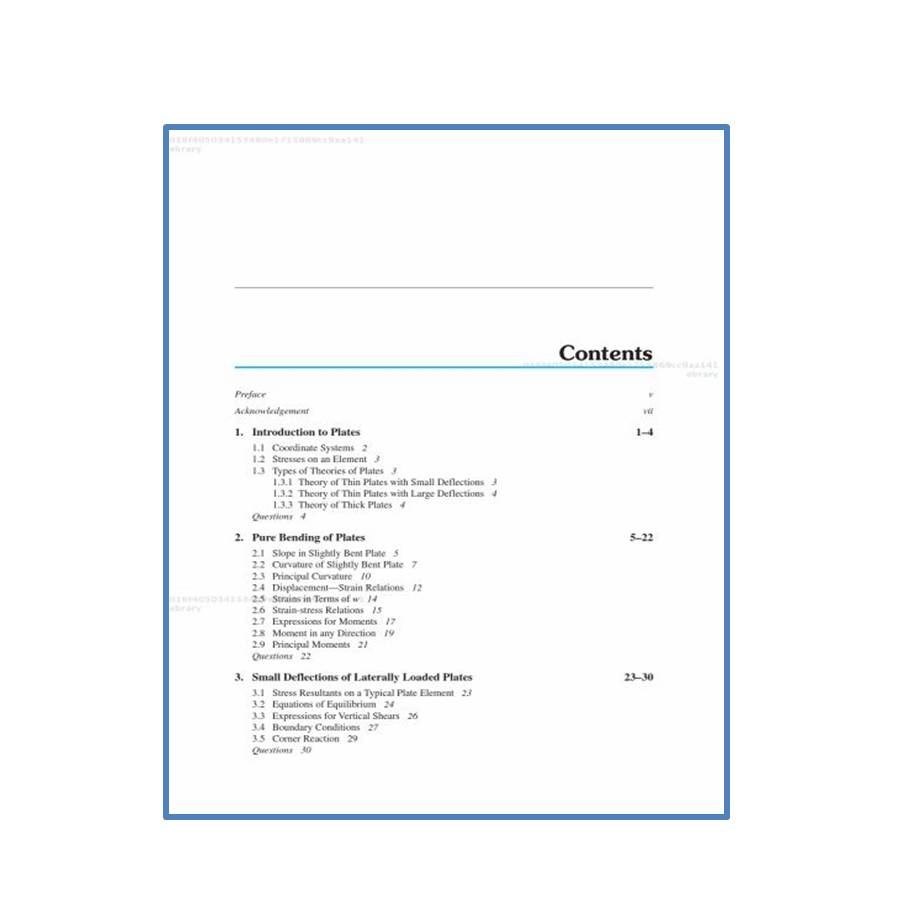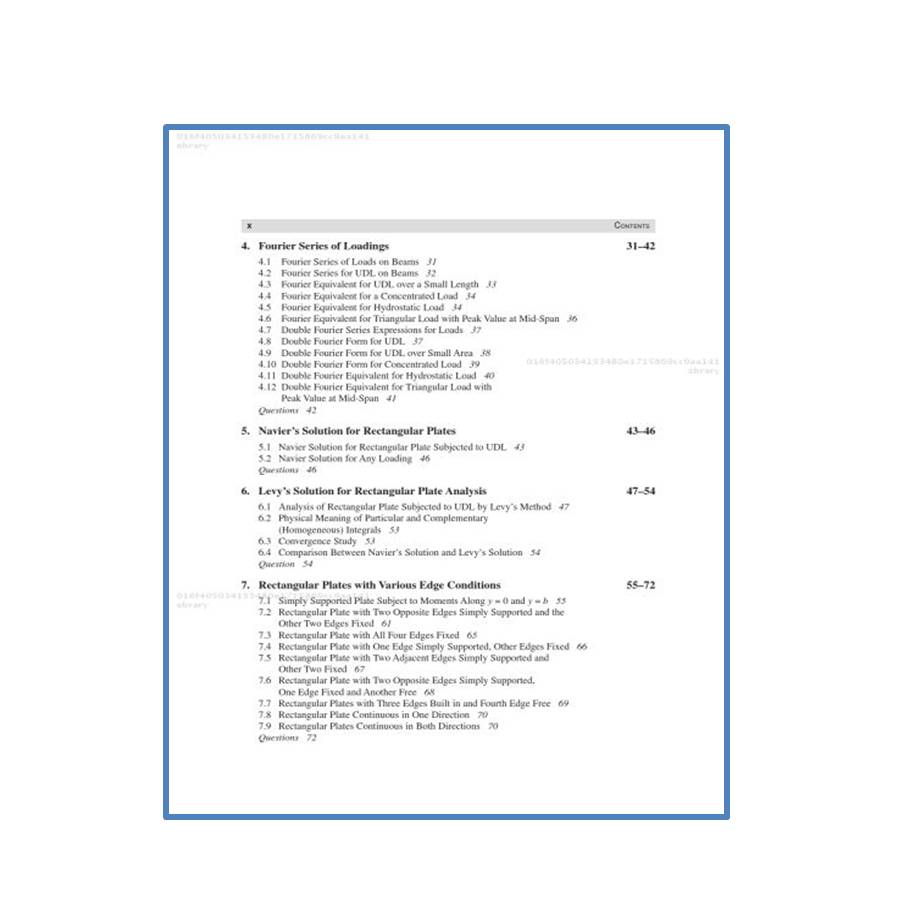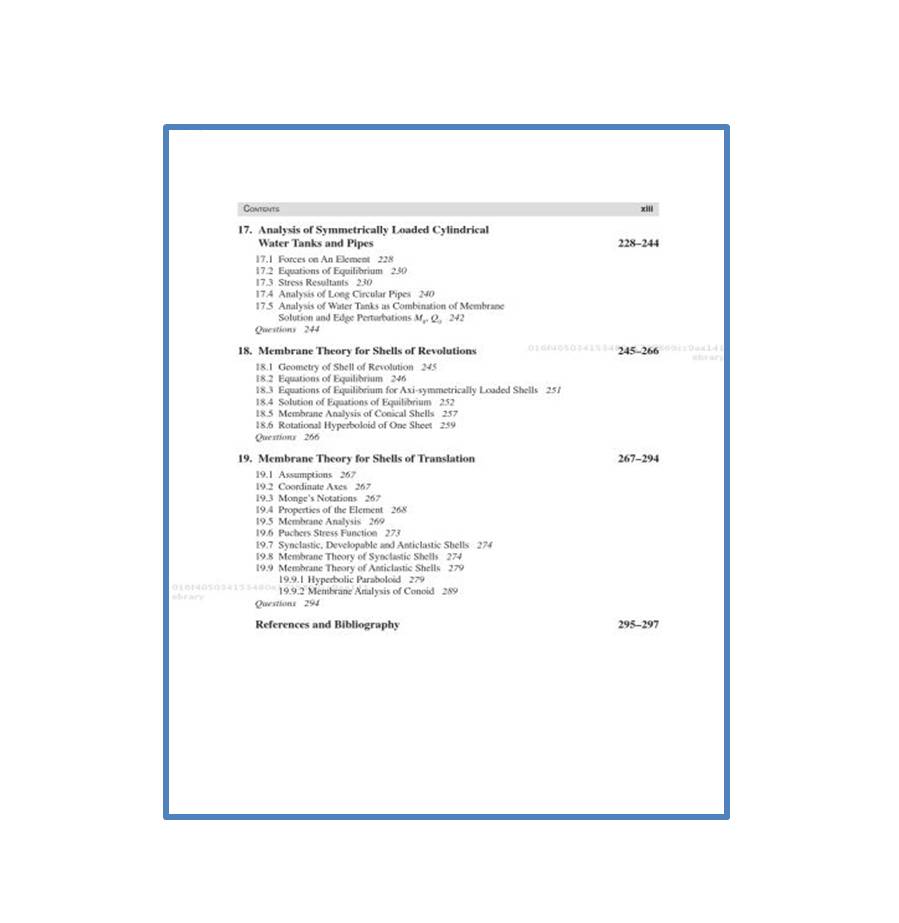Description
Preface
Plate is a flat surface having considerably large dimensions compared to its thickness with supports along few edges and is subjected to transverse load. For civil engineer common example of plate is a slab. At undergraduate level students are taught design of slab by approximate methods or by using moment coefficients given in the code, without going through how they are obtained. At the post-graduate level theory of plates is taught to structural engineering students to understand actual load transfer in plate by elastic analysis. It involves forming and solving fourth order differential equations.
Shells are curved plates. The analysis of shells involves additional complexity. A design engineer should understand mechanism of load transfer and internal forces developed in the shells. Shells are to cover large area free of columns and architects prefer them for their aesthetic appeal. A structural engineer has to learn theory of shells to design economical shell structures with more confidence.
In this book theory of plates and shells is explained. The analysis is restricted to classical method only. Finite element method is the numerical method suitable for the analysis. Author has covered the shell analysis by finite element analysis in his seperate book. A number of commercial packages are available for the analysis by finite element method. But it is necessary that design engineer should have basic knowledge of load transfer and internal forces that develop, which is possible by going through classical theory. For validating the results obtained by finite element packages, classical theory for commonly found standard cases is essential.











Reviews
There are no reviews yet